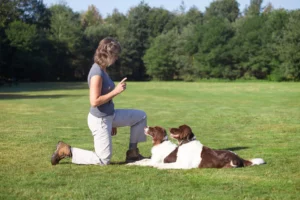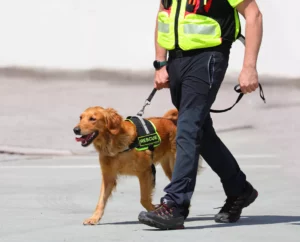By Cathy M. Rosenthal

I’ve moved 23 times as an adult. Add in another 14 from my childhood, and you can imagine how good I am at packing a box. But what stayed with me through all those moves isn’t how to fit glassware into bubble wrap—it’s the memory of the pets who didn’t always come with us.
Sometimes they were rehomed because the new place didn’t allow pets or because my parents thought it would be too stressful. Whatever the reason, I saw firsthand how painful that separation could be—not just for the pets, but for us kids, too.
As an adult, I made myself a promise: every animal in my care would always move with me, no matter what. And they have. Dogs, cats, fish—you name it. If I was moving, they were moving with us.
I’ve also worked in animal shelters for years and seen the emotional toll moving takes on pets who are left behind. They are absolutely devastated to be separated from their families. They don’t understand why they’ve been abandoned. They grieve. And the minor stress of adjusting to a new home doesn’t even begin to compare to the heartache of losing the family they love.
The good news is, it’s not hard to move with pets when you know what to do. Whether you’re driving across town or flying across the country, a little preparation goes a long way in keeping your animals calm, safe, and close by your side.
If you’re planning a move with your pet, here are some steps to make the journey easier:
Start with pre-conditioning.
If your dog isn’t used to car travel, begin now. Take short trips to fun places—the park, a pet store, even a drive-through where they get a treat. Add a blanket or toy to the backseat so the car begins to smell like “home.” Slowly build up to longer drives to help ease any anxiety before the big day.
Flying? Know the rules early.
If you’re flying with your pet, check airline requirements well in advance. Small pets may be able to fly in the cabin in a carrier under the seat, but others may need to fly as cargo. Not all airlines
accept pets in cargo, and restrictions vary based on weather, breed, and destination. Ask your vet if your pet is healthy enough to fly, and be sure to get a copy of your pet’s vaccination records before you go.
Book pet-friendly hotels ahead of time.
Many hotels welcome pets, but don’t assume all do. Websites like BringFido.com or GoPetFriendly.com can help you plan your route and find places to stay. Look for hotels with easy outdoor access for potty breaks, and always call to confirm their pet policy before you arrive.
Talk to your vet about motion sickness or anxiety.
If your pet struggles in the car, consider a calming chew, a ThunderShirt®, or anti-nausea medication prescribed by your vet. Never try a new medication for the first time on moving day—do a test run to ensure it works well.
Feed lightly and take breaks.
Give your pet a small meal at least an hour before you leave, and stop every few hours for water, walks, and potty breaks. Fresh air can also help reduce nausea, so crack the windows when you can.
Pack a “Pet Open First” box.
Like any good packer, I always have a box labeled “Open First” that includes toilet paper, paper plates, plastic utensils, sheets, and towels—basic survival gear for that first night in a new place. Your pet needs a version of this, too. Pack their food, bowls, medication, favorite toys, leash, bedding, poop bags, and litter box (if needed) in a clearly marked “Pet—Open First” box. Do not send this box with the movers. If it end
s up on a moving truck, it could be days—or even weeks—before you see it again.

And don’t forget the cats!
While dogs may be underfoot during the move, cats often do best when kept in a quiet room away from the sound of tape, boxes, and heavy foot traffic. That said, they love boxes—so be sure to leave a few open and empty ones out during the packing and unpacking stages. It won’t feel like chaos for your cat; it’ll feel like Christmas.
Double-check ID and microchips.
Update your pet’s ID tags with your cell number and make sure their microchip registration includes your new address. Moving can be disorienting for pets, and even indoor animals may try to bolt if they get scared.
Reassure them when you arrive.
Set up a quiet space in your new home just for them. Put out their familiar things first—their bed, their water bowl, their toys—so they have a little corner of comfort in unfamiliar surroundings. Walk them through the home slowly, and stick to a normal feeding and potty routine as much as possible.
Moving can be stressful, but it can also be an adventure—especially when you bring the whole family along, including pets. With a little preparation, some empathy, and an open-first box or two, you can turn your move into a smooth ride for both you and your four-legged companions.
And trust me, nothing makes a new house feel more like home than having your pets settle in beside you.







